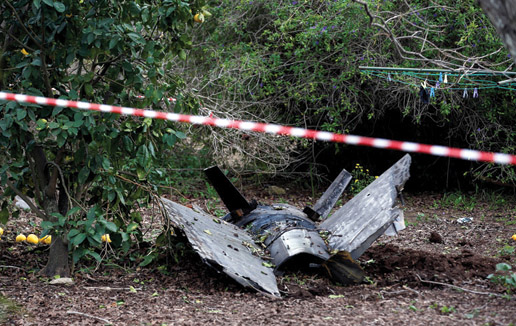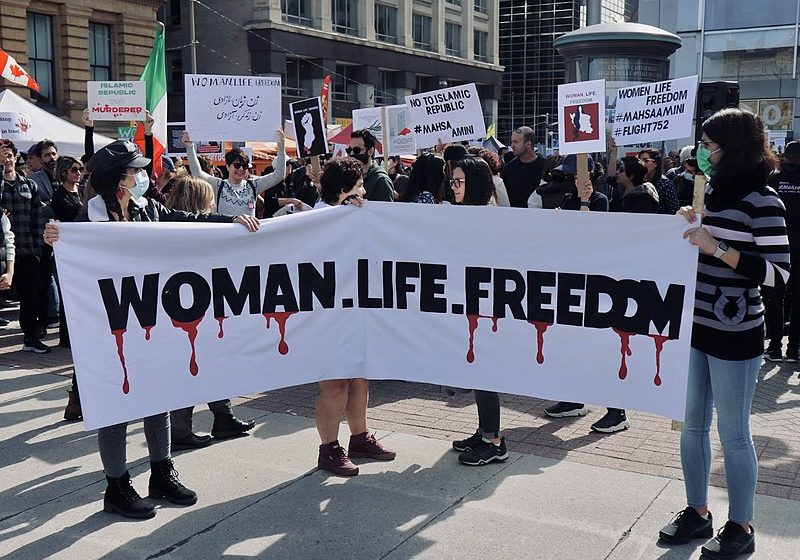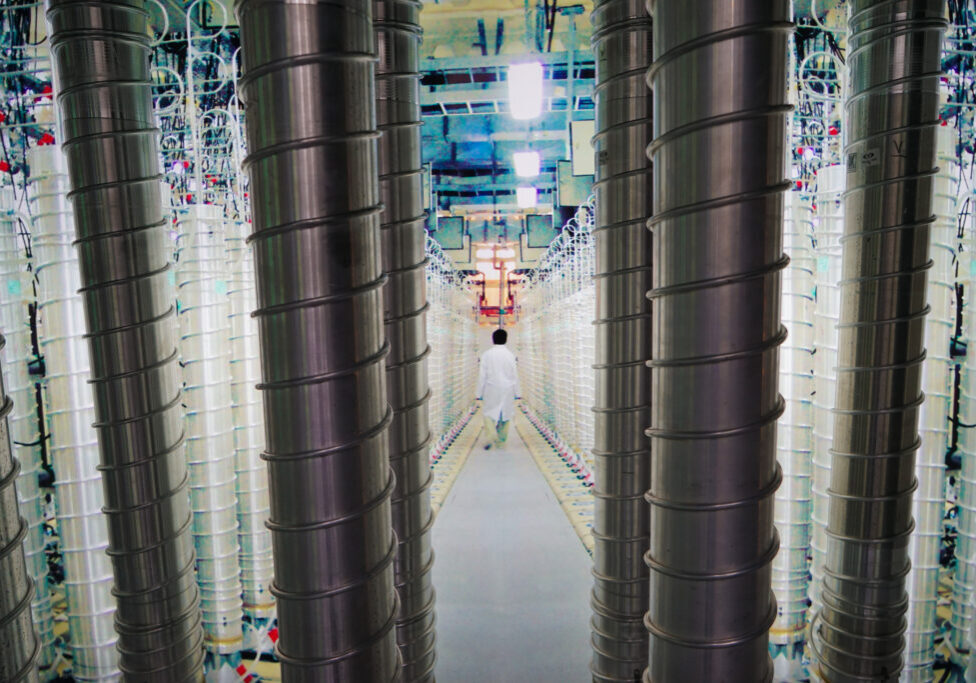Australia/Israel Review
Israel’s Iran problem heats up
Feb 28, 2018 | Amotz Asa-El

Amotz Asa-El
Saturday mornings in the Jordan Valley are usually as tranquil as the fishponds that dot the river floodplains, but dawn on February 10 was different. A pilotless drone emerged from the north and glided several kilometres along the river before sparking an unprecedented Israeli-Iranian confrontation.
Having detected the drone, the Israel Air Force dispatched an Apache assault helicopter that immediately downed the intruding aircraft, using unspecified ammunition. Down in the valley, at the same time, sirens went off in the city of Beit Shean and dozens of surrounding villages and farms.
Upon spotting it, the IAF identified the drone as Iranian-made, a claim later vindicated by the fragments it collected on the ground.
The drone’s course was observed from its takeoff outside Palmyra, more than 200 kilometres northeast of Damascus. Based on its home base, as well as on additional intelligence, the IDF then reported to the Government that the drone’s penetration was executed by Iran’s Lebanese proxy, Hezbollah; that the intrusion was premeditated; and that it could not have been executed without Iranian approval.
The Government concluded that Israel’s sovereignty had been breached by Iran, and decided to retaliate – immediately, broadly and unambiguously.
The IAF therefore struck 12 different targets in Syria that morning, including several in greater Damascus. Four of the targets were described as Iranian.
One strike surgically targeted the control centre from which the drone was launched and directed. Despite the distance from Israel – some 270 km – the drone’s control cabin sustained a direct hit, according to the IDF’s report. A nearby Iranian base was also struck.
As far as Israeli media is aware, these were the first strikes the IDF ever executed directly targetting Iranian military installations. It is also believed that some of the casualties from the attack included Iranian “advisers”.
The targets were not fully specified, but the IDF said they included Russian-made SA-5, SA-2 and SA-17 surface-to-air missiles and that the destruction of such targets added up to nearly half the Syrian military’s anti-aircraft systems.
These, then, were the first two parts of that Saturday morning’s drama. The third and last part came as the Israeli warplanes returned home.
After having already crossed into Israeli airspace, the squadrons came under heavy missile attack. One Syrian missile exploded near an Israeli F-16 above the lower Galilee’s Beit Netofa Valley, forcing its pilot and navigator to eject and parachute down, landing outside the sleepy community of Adi, some 15 km east of Haifa. One was seriously injured, the other suffered only minor wounds.
It was the first time an IAF aircraft has been downed by enemy fire since the 1982 Lebanon War (the jet abandoned over Lebanon in 1986 by navigator Ron Arad – who remains missing to this day – crashed due to mechanical failure.)
By Sunday, Feb. 11, the reactions and initiatives of the belligerents in this risky drama were clear, as also was their decision to step back and avoid further escalation – for now.
The Iranian move was likely designed to test Israel’s alertness as the Revolutionary Guards attempt to draw Israel into the fray of the Syrian civil war.
Iran’s quest, in addition to establishing an overland corridor from Teheran to the Mediterranean, is to extend Hezbollah’s deployment from the Lebanese border eastward, to the Golan Heights, and in due course launch from there a guerrilla war on the IDF.
Israel’s aim is to prevent Iran’s military consolidation in Syria. While Jerusalem’s policy goals are no secret, this clash demonstrated an Israeli willingness to take serious risks in order to pursue its aims.
Operationally, Israel’s resolve to carry out its retaliatory attack was such that it momentarily halted all takeoffs and landings at Ben-Gurion Airport, a rare measure designed to clear that airspace for the Air Force.
Strategically, Israel’s response seems to mean that if Iran chooses to ignore Israel’s warnings not to consolidate its military presence in Syria, Israel will act forcefully to pre-empt such attempts.
The Israeli-Iranian clash further complicates an already congested theatre of war where an assortment of regional and foreign powers are already embroiled in multiple, and often conflicting, military efforts.
The military crowding, both in and above Syria, might create unintended clashes between various foreign antagonists.
In January, in Syria’s north, Turkish armoured columns invaded the town of Afrin, thus extending Turkey’s occupation of Syrian Kurdistan, as part of Ankara’s ongoing struggle against Kurdish independence. Turkey’s strategy provokes the US, which is backing the Syrian Kurds. At the same time, it also provokes Bashar Assad, who is deploying loyal militias which, according to Syrian TV, are ready to clash with the invading Turks.
Meanwhile, in the west, Russia’s naval and aerial bases are helping President Bashar Assad fight the seven-year revolt against his regime – a revolt which has yet to be fully quelled. This pits Russia against Saudi Arabia, which backs many of the rebel groups, and sees in Assad an arch-enemy of the Sunni cause that Riyadh is leading.
As demonstrated by the rebels’ downing of a Russian Sukhoi-25 in early February outside the town of Saraqeb, north of Damascus, reports of the revolt’s imminent demise have been premature. A Russian report of an attack on its Khmeimim airbase on Jan. 9, involving 13 armed drones, adds to the general sense of fragility, even if that attack was repelled as Russia claims.
Most ominously, the Syrian mess pits Russia against the US.
An attack by Russian-allied militias on American and Kurdish troops in the Deir el-Zour region in east Syria triggered a retaliatory strike by American jets, drones and gunships which killed up to 200 mercenaries during the week of Feb. 4. Some of the casualties were reportedly Russian.
Russia has washed its hands of that militia, saying it acted without authorisation, and the US accepted the explanation. Even so, Russia’s backing of Assad places it at odds with the Western air forces that roam Syria’s airspace, formally as part of the ongoing war on Islamic State, informally in order to remain relevant when a postwar Syria emerges from Syria’s debris.
The US has already attacked the Syrian military several times, most memorably in April last year following the gas attack on the western town of Khan Shaykhun. More recently, on Feb. 13, French President Emmanuel Macron told reporters that if the Syrian regime uses chemical weapons “France will strike.”
Another Syria-based clash involves the US and Turkey.
An American general’s warning to the invading Turks that, “we will respond aggressively if attacked” made President Recep Tayyip Erdogan warn the US on February 13 that it might be in for “an Ottoman slap.” A Turkish-American military skirmish is unlikely despite this rhetoric, but any spirit of trust between NATO’s two largest armies has now become another casualty of the Syrian war.
The Iranian-Israeli tension, then, may seem to some as but another of the many tensions with which the Syrian warzone has come to be rife. Yet it isn’t.
The friction between Teheran and Jerusalem is not circumstantial or accidental; it is inherent, engineered, and long-standing.
Driven from its inception by an ideological rejection of Western civilisation in general and the Jewish state in particular, the Islamic Republic created, armed, trained and financed Hezbollah in order to harass Israel – a task the Shi’ite Lebanese organisation has fulfilled with relish.
The Jewish state, for its part, can’t afford an extensive Iranian military presence in Syria. There is a broad consensus over this in Israel, as became clear following the IAF’s attacks on February 10, which were backed on both sides of the Knesset’s aisle.
Having said this, Iran’s future actions are less predictable than Israel’s response.
Yes, in terms of its desires, the Iranian regime would like to renew and expand its harassment of northern Israel, an endeavour in which it has not actively engaged since the Second Lebanon War, 12 years ago this year.
However, in its actual conduct, Iran can be quite cautious. Teheran is avoiding sending large-scale Iranian units into Syria, preferring instead to create local militias, with Iranian commanders and advisers, and to import non-Iranian Shi’ite fighters from other countries.
Moreover, whereas Israel’s attitude on this front is a matter of consensus, Iran’s is a subject of internal debate: some are known to question the financial affordability of the Revolutionary Guards’ regional adventurism; others might question its military feasibility; and still others, whose voices were heard in January’s unrest, question the very purpose of Iran’s meddling throughout the Middle East.
Paradoxically, this lack of consensus and Iran’s general domestic restlessness may actually raise the likelihood of Iranian provocations along the Syrian-Israeli border, because clashes with Israel could serve to distract public attention from the economic crises that ignited January’s unrest.
While all this is followed closely by Israel’s intelligence community, the working assumption among Israeli generals is that domestic change in Iran will be slow to mature, and even slower to undo Teheran’s policy of Syrian adventurism. As things currently stand, they say, the next Israel-Iran skirmish over Syria is only a matter of time.
Tags: Iran






